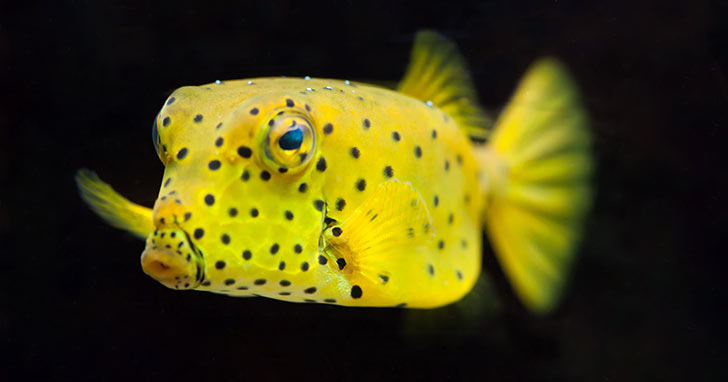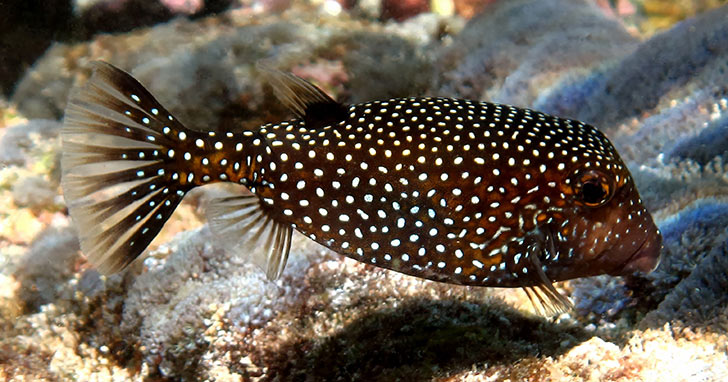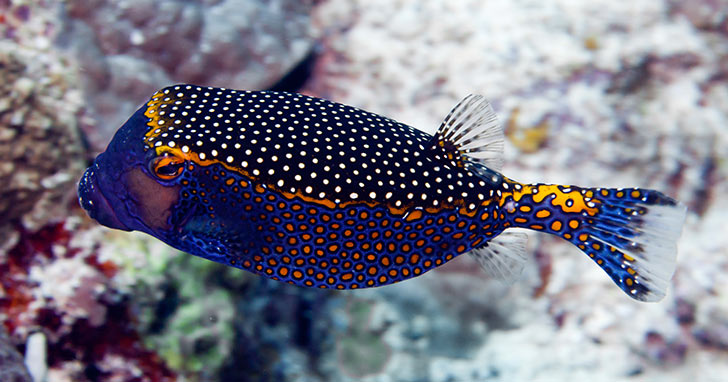Boxfish: They’re not for everyone
What are Boxfish? If you’re looking for the kind of fish you saw in the early 2000’s video games where everything was more or less boxy, you wouldn’t be too far off when it comes to the Boxfish. The Boxfish, scientifically known as Ostraciidae, is, as its name describes, a rather squared and bony species, closely related to the Filefishes as well as the Pufferfish. Popular for the “honeycomb” or hexagonal patterns on their skin, these whimsical fish come in a variety of different colors. These hexagonal scales are fused together into a solid, carapace akin to that of a box, from which the tail, fins, eyes, and mouth protrude. Due to these heavily armored scales, the Boxfish tends to be on the slower side, swimming in a rowing manner. Boxfish can grow up to twenty-four inches.
Tank conditions for a Boxfish Let’s get this out of the way: Boxfish are an ill-advised choice for any aquarium enthusiasts who are anything less than experts. Ostraciidae require a minimum tank size of 180 gallons, and caution needs to be used in every aspect of a Boxfish’s care. Placing Boxfish in a reef tank may result in them nibbling on tubeworms. Are Boxfish poisonous? While Boxfish are closely related to Puffers, they are not considered to be as poisonous as the latter. However, they have a very unique method of self-defense that contributes to how difficult it is to care for them. When Boxfish are threatened or stressed, their skin secretes a toxin into the water, effectively poisoning all marine life in the immediate vicinity. In particular, the Hawaiian Boxfish boasts a very special toxin known as Ostracitoxin, or Pahutoxin, which breaks down red blood cells. This particular method of self-defense is exactly what makes a Boxfish a difficult and complicated fish to raise in an aquarium, particularly when it comes to selecting tank mates for it. If the Boxfish gets stressed out, the toxins it releases will kill off all other tank mates in the aquarium.
What do Boxfish eat? While very little success is to be found in breeding Boxfish in an aquarium, their diet is somewhat restrictive and should be adhered to by attentive enthusiasts determined to keep these boxy species. During the initial phase following introduction into the aquarium, Boxfish require a diet of live brine shrimp or mysis shrimp. After the acclimatization phase, Ostraciidae can be fed chopped squid, clams, and mussels, as well as herbivore prep.
Conclusion
Boxfish are incredible additions to an aquarium; however, they are absolutely not for everyone. Refrain from taking up Boxfish for your aquarium unless you are an expert. With a unique and fascinating self-defense system, the Ostraciidae is a challenge for even the most veteran aquarists.
|
||||||
|
|





